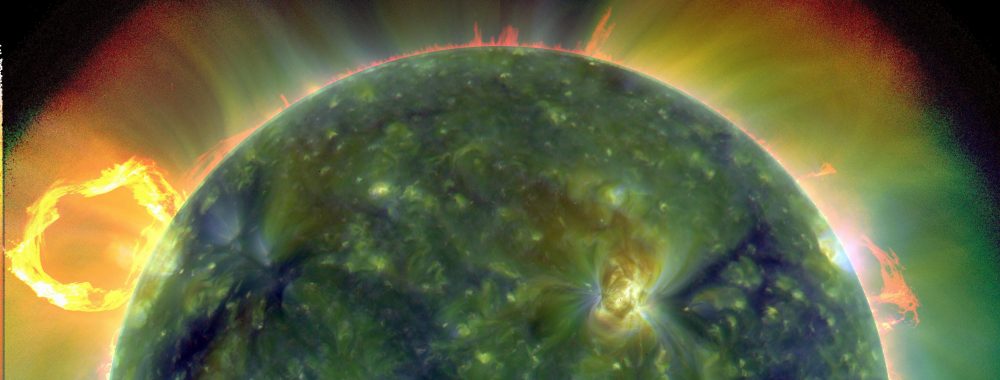Recent high-resolution observations from space and ground based instruments, such as the Interface Region Imaging Spectrograph (IRIS), the Swedish 1-m Solar Telescope (SST), and the Dunn Solar Telescope (DST) have provided an unprecedented view into the complex and dynamic plasma environment during solar flares. In particular, the observation of the chromosphere, which is the site of the bulk of energy deposition, is key to understanding the physical mechanisms at play during flares.
Understanding the physical mechanisms responsible for, and at play during, solar flares still remains one of the most important open issues in astrophysics. These energetic events release a tremendous amount of magnetic energy, >1032 ergs, resulting in efficient particle acceleration and are often associated with the ejection of coronal material, strongly influencing space weather.
The imaging and spectroscopic observations are typically complemented by state-of-the-art solar flare and radiation transfer numerical models as a means to both (1) assist in the interpretation of the observables through forward modelling, and (2) assess the validity of models of flare energy transport. This first point is particularly true in the case of optically thick, chromospheric emission lines, which are non-trivial to interpret due to their complex formation properties and due to the presence of non-thermal and non-equilibrium processes.
While several magnetic field-aligned flare loop models with 1D radiative transfer have been developed and are extensively used, there has been little concerted effort to critically compare, contrast, and validate, the output of these models to each other. This is despite the fact that these models are critical as a means to interpret the observations.
Our ISSI team aims to bring together, for the first time, the three most widely used field-aligned loop models that simulate the atmospheric response to flare energy injection: RADYN, HYDRAD & FLARIX. We propose to assess how differences in numerical techniques and code features (single fluid vs multi fluid, boundary conditions, treatment of energy transport and deposition, numerical grid size and resolution, treatment of radiative processes, treatment of thermal conduction etc.,) affect model-model and model-data comparison. We will also compare the results of several post-processing codes, which are often used in conjunction with the (radiation-) hydrodynamic models to obtain the accurate synthesis of spectral lines not included in the original codes: RH, MALI & MULTI.
Our approach will be to select a set of well-observed flares with multi-wavelength coverage. From this canonical dataset, we will agree upon a set of observables, use the forward modelling to predict those observables, and also use these as a basis for comparing, contrasting and calibrating the relative performance of the models.
As the quality of solar flare observations continues to increase (e.g. the upcoming Daniel K. Inouye Solar Telescope, DKIST, and Solar Orbiter), and as the community is reliant on flare loop models to aid in the analysis and interpretation of these observations, it is crucial to have validated models, a solid understanding of the advantages and disadvantages of each code, and to lay the foundations for moving towards model improvements.
The full proposal can be found here: Interrogating Field-Aligned Solar Flare Models
